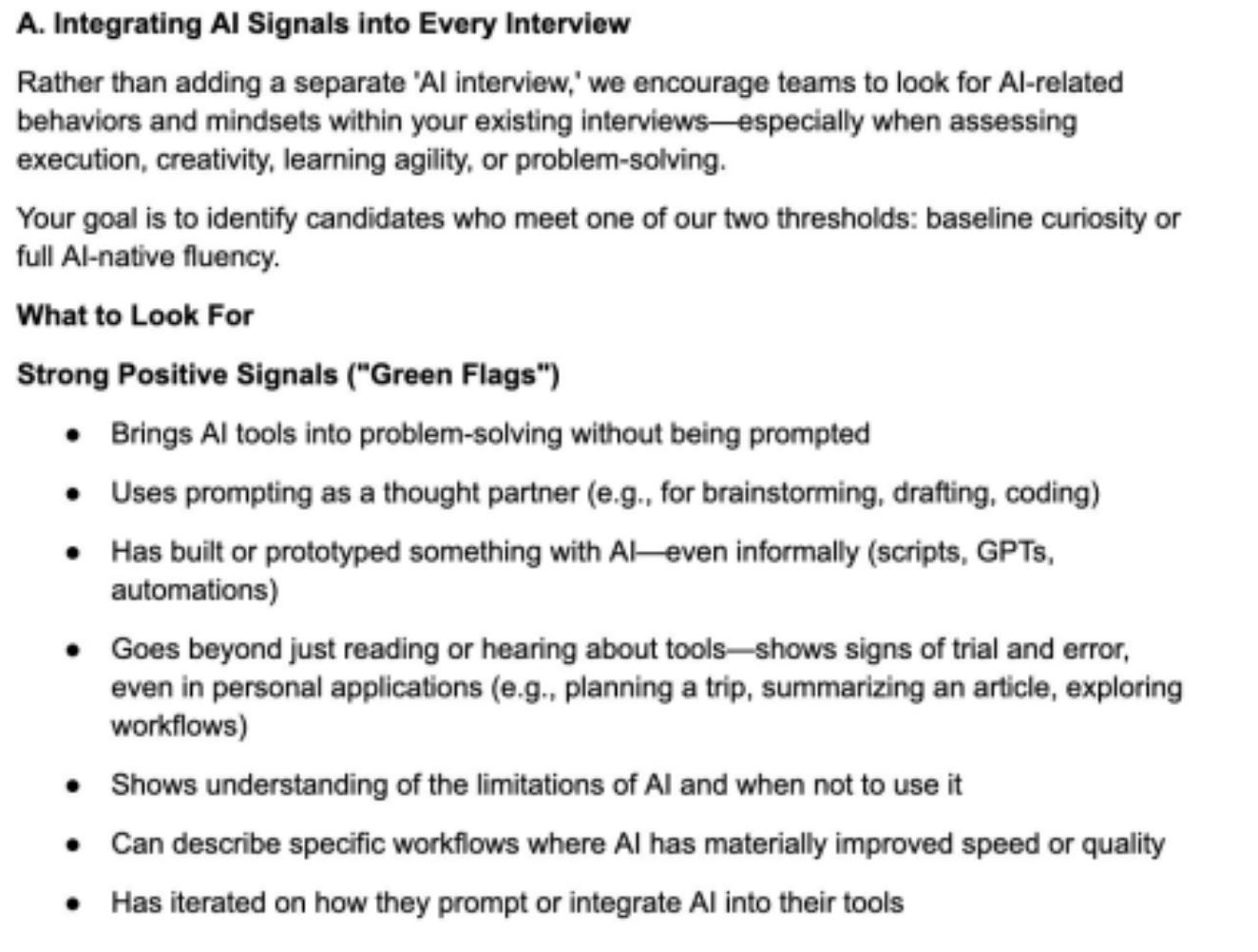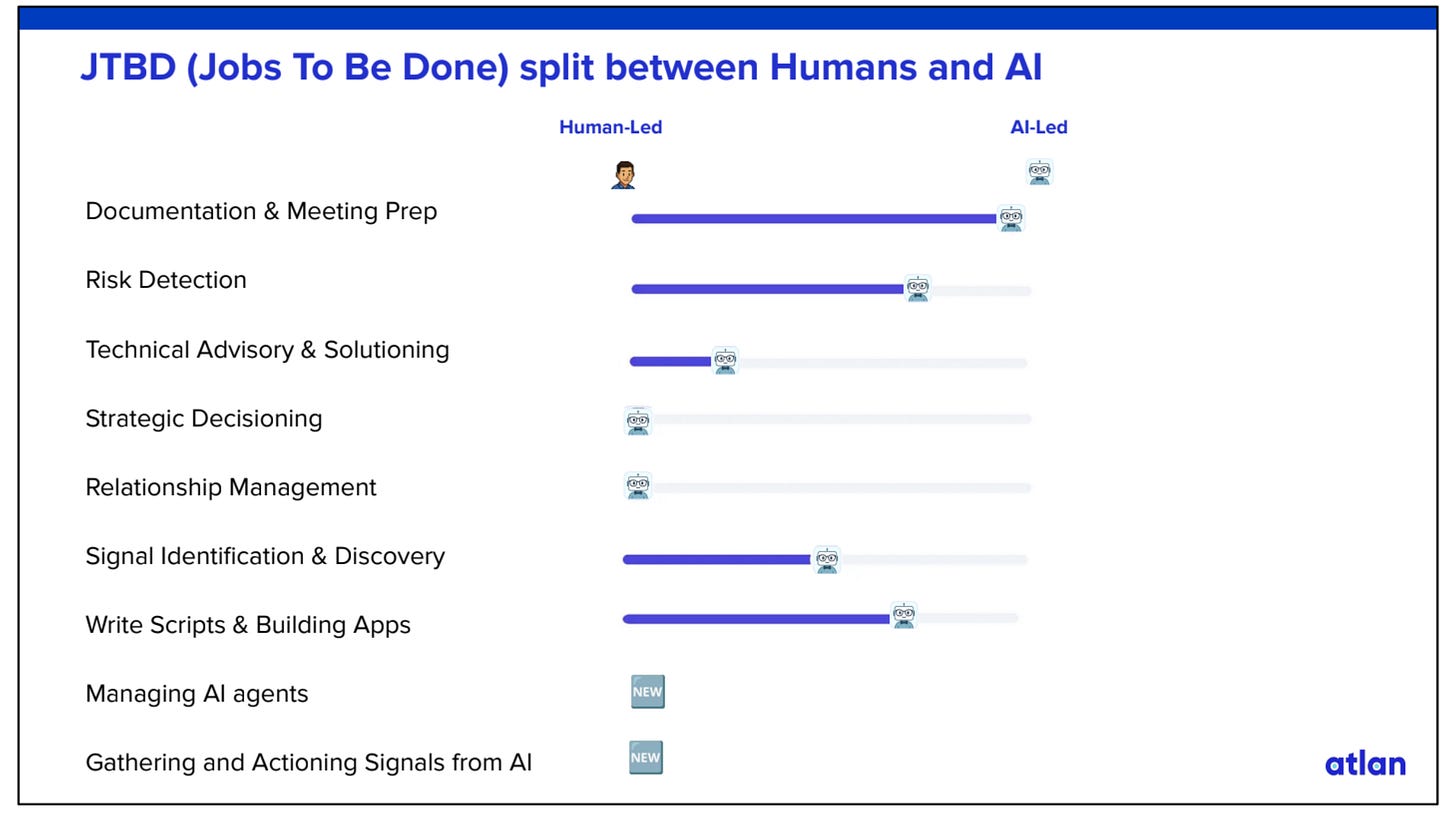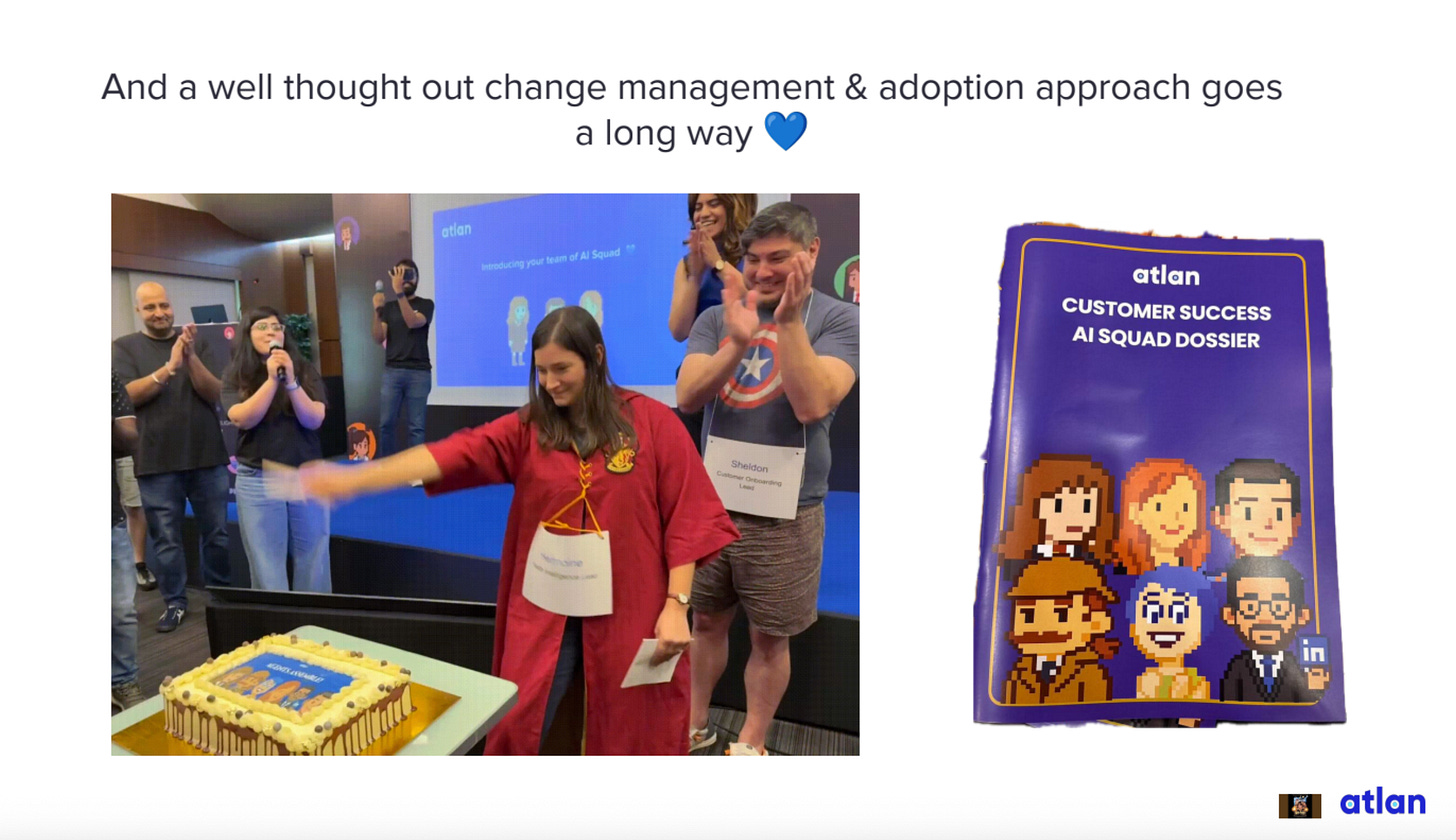Case Study: Moving from AI-First to AI-Native
How Atlan Re-Engineered its Company, Processes, and People to become AI-Native
What is the difference between ‘AI-Forward’ or ‘AI First’ and truly ‘AI Native’? Can you get native if you weren’t born that way?
At the 10X CEO Conference two weeks back, Prukalpa ⚡ Sankar, founder and co-CEO of Atlan, laid out a detailed roadmap and toolset of their journey to becoming AI-Native that was impressive.
After substantial focus and push, this company of 400 has reimagined roles and jobs to be done, built more than 152 agents that made 4,000 runs in just 5 weeks. They have massively sped up processes and unlocked new responsiveness that wasn’t possible before, especially in customer support. The company is AI-ifying across every role and toolset. I share her tech stack, process, and takeaways below.
For her:
'Being "AI First" means AI is considered as the primary solution. But being "AI Native" means AI is fundamental—integrated into the fabric of our thinking, operations, and processes. It means reimagining workflows from first principles in a world powered by AI, rather than simply layering AI onto existing processes.”
Four-Part AI-Native Roadmap
Atlan took a four-part journey on its sprint to AI-Native: Phase 1: AI Taskforce, Phase 2: Shift the culture, Phase 3: Embed into hiring, Phase 4: Rethink the org chart.
Phase 1: AI taskforce
Prukalpa’s first step, one many teams have taken, was to assemble an elite team of people who had already shown passion and skill in AI. They were tasked with taking the most impactful company use-cases live, determining company-wide tooling, and driving enablement.
Phase 2: Shift the culture
She then launched an AI Native mission to define overall strategy across three long-term pillars:
Next came an AI productivity challenge to the company - a time-bound contest where team members could win prizes and be celebrated for identifying where they could leapfrog their productivity with AI. More than 300 people contributed, and AI started entering workflows across the business.
Phase 3: Embed into hiring
Next, AI became part of the hiring process. Atlan introduced hiring veto power for candidates who didn’t have enough AI curiosity or AI skill. In the interviews, Atlan made it explicit that candidates were expected to use AI extensively, even and especially in interview project rounds. They even asked candidates to open up AI and prompt in front of the interviewer to see how they interact and think using AI. Their guidance to the team on interviewing for AI skills:
Phase 4: Rethinking the org chart
Then, Atlan went on to rethink the org chart - starting specifically with the CX team, which had high costs, and where Atlan thought their unique processes and flows wouldn’t be met well by external tools.
They started mapping “a day in the life,” employee by employee, and evaluating the ‘jobs to be done’ to see which could be most impacted by AI:
In the new world org, one (human) customer success manager would have several (agent) employees, for instance, a call intelligence lead (to prep and follow up), or a health intelligence lead (for reading product analytics, feeding intelligence back for the decision-making).
They found that the more specific they could make the agents, the better the agents did, ultimately becoming better than humans at doing the sub-task. This resulted in a single customer service agent having up to nine agents doing specific aspects of their job for them:
The results for a company of just 400 were impressive. They now have more than 152 agents in their AI registry, and have had more than 4,000 agent runs in just 5 weeks. Many processes were reduced from several hours to less than one, and experienced some capabilities that just weren’t even feasible before (mid-call briefings on attendees by an agent, for instance) are now joyfully in flow.
Why Atlan Moved From Prompts to Agents
Atlan’s early initiatives used prompts with Notebook LLMs but evolved to agents for even more impact. While prompts are simple to set up and great for static tasks (summaries, rewrites, Q&A), they don’t capture memory or continuity across steps, and can’t autonomously decide what to do next.
The agents can reason, plan, and take actions across different tools/data sources (such as calendars, CRM, and product data), and iterate to achieve their goals. This was useful for Atlan’s complex tasks like monitoring account health,
drafting personalized success plans and triggering updates.
Though the agents are more complex to design and govern, the results have been more than worth it for Atlan.
What was their tech stack?
Key Learnings from Atlan’s AI-Native Journey
Pick the right problems – Rethinking core, high-impact workflows from first principles led to the biggest wins.
Specialize your agents – Narrow, task-specific agents consistently outperform general ones.
Context is king – Data quality and tight feedback loops make or break effectiveness. Especially in customer-facing forums, the data must be right.
Build cross-functional pods – Pair a platform owner, an engineer, and a workflow expert to move fast and effectively.
Make it fun – Contests, playful names, and community kept adoption high and sticky. You need the team’s participation and feedback for success. After introducing herself in Slack like a (human) employee, Atlan’s Health Intelligence agent, Hermioni, was celebrated with a party and a cake:
The irony?
While Prakulpa’s team is an impressive rocket of growth and AI deployment, she’s measured about her AI optimism: “I think all of the companies that survive will have extensive AI agents - I don’t know that it will be a competitive advantage. But at a high-growth startup, it’s hard to hire fast enough - so if we can do more with less, we can do more.”
Have you started rethinking workflows for an AI-Native world yet? I’d love to hear your stories.
Carilu Dietrich is a former CMO, most notably the head of marketing who took Atlassian public. She currently advises CEOs and CMOs of high-growth tech companies. Carilu helps leaders operationalize the chaos of scale, see around corners, and improve marketing and company performance.









How do remote and cross border teams collaborate in the AI native world. Any practical challenges you folks faced?
Nice article, thanks for writing it!